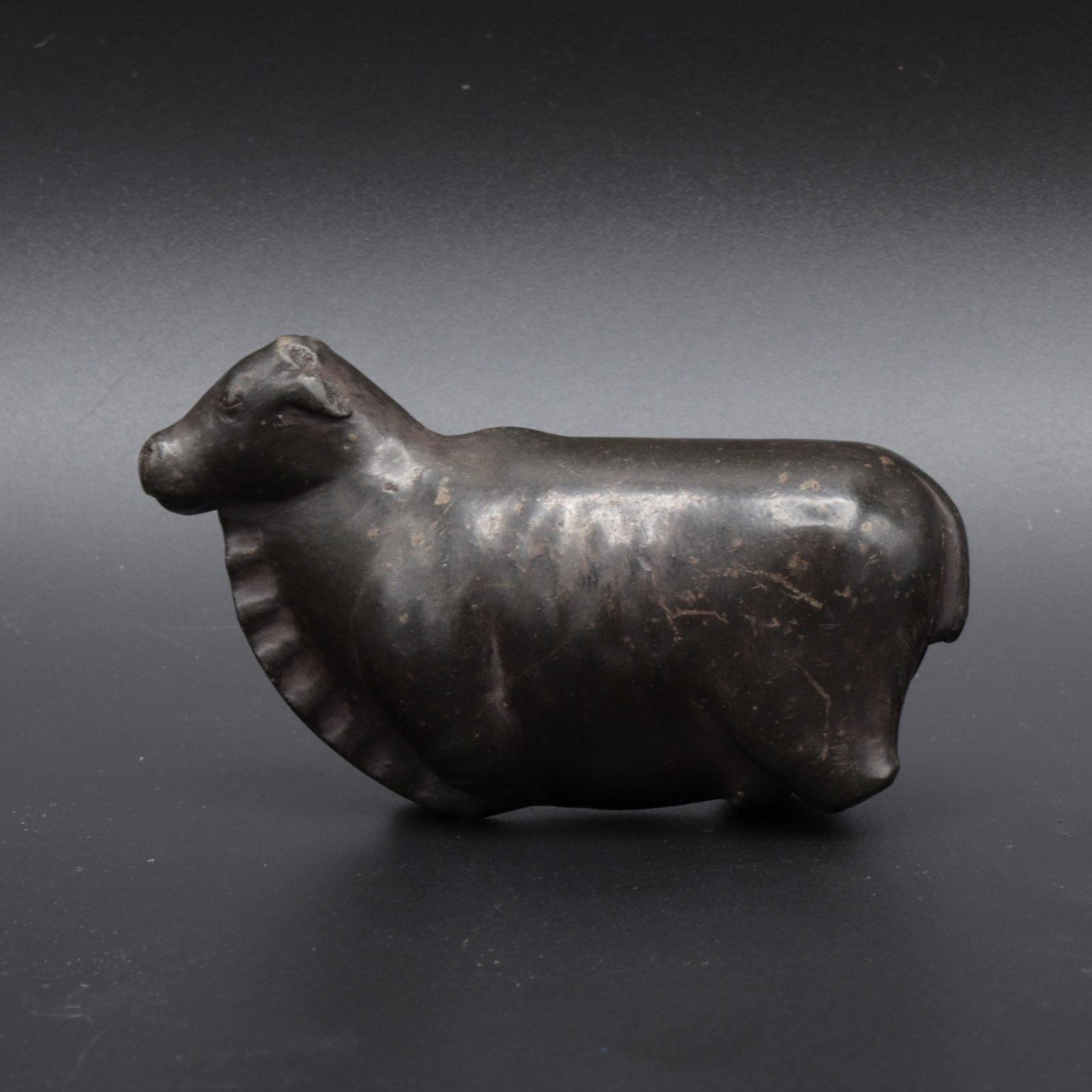Sumerian Bull from Jemdet Nasr Culture, 2200-1800 BCE
Stone
5 x 8 cm
2 x 3 1/8 in
2 x 3 1/8 in
LI.3273
Typical of the Late Uruk and Jemdet Nasr periods. Such extraordinary sculpture was developed at the end of the fourth millennium B.C., when cities emerged across Mesopotamia. Vessels of this...
Typical of the Late Uruk and Jemdet Nasr periods. Such extraordinary sculpture was developed at the end of the fourth millennium B.C., when cities emerged across Mesopotamia. Vessels of this type have been frequently found in palaces or religious structures, which suggests that they had a special function in such settings. After cylinder seals, they are the most important source of pictorial information for the period. The pictures are drawn from the natural realm, often portraying, as here, an ordered world of domesticated animals or, alternatively, the threat of potentially hostile creatures such as the lion.
